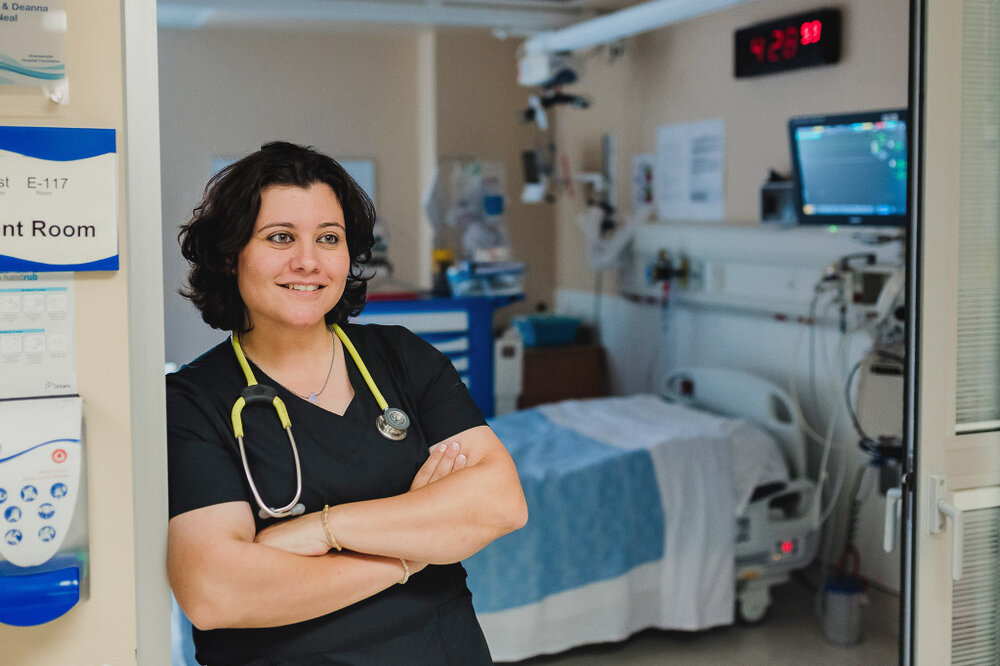The core objective of technological advancements is to enhance the quality of life of society at large. With respect to healthcare, new technological innovations can benefit both patients and the medical industry. There are already great examples of such innovations like robotics, immunotherapy, augmented reality, virtual reality, and more that are improving patient outcomes while simultaneously reducing the costs to deliver care.
Considering how stretched the healthcare industry is, this technology may seem like an expensive luxury at the moment. However, in the long run, the right technology can help cut the overall costs of medical treatment and improve patient health.
While our life expectancies have improved significantly over the last century- our sedentary lives have introduced chronic diseases such as diabetes, obstructive pulmonary disease, mental health disorders, and more. These are long-term degenerative diseases that add a financial burden to patients and the healthcare system. The right technology will allow doctors to detect and treat/prevent these diseases sooner and reduce the burden of high costs in the long run.
Here’s 6 ways of Reducing healthcare costs through technology:
1. Automating Administrative Tasks
Automating repetitive tasks can significantly improve processes and give physicians extra time to care for their patients. Administrative tasks take up a considerable amount of time and doctors end up spending more time doing something like entering patient notes into electronic health records (EHRs) than actually treating them. Not to mention, this also leads to physician burnout.
There are numerous softwares available today that doctors can use to either automate their day to day administrative tasks or delegate them. For example, instead of manually filling out forms or entering test results, some apps allow you to scan the test results and import them into your EMR.
Mobile apps are starting to become the #1 time-savior as theirs apps for almost everything – prescriptions, testing, etc. Of course, one of the major admin burdens is medical billing but with mobile apps, like Dr.Bill, you can submit claims on the go in only a few taps, so you don’t have to worry what procedures you did at the end of a long work week.
Other, more basic tasks, such as booking an appointment and sending reminders can also be automated to improve overall efficiency. Automation shifts the focus from paperwork to patients ensuring more time spent caring for patients than documenting them.
2. Telemedicine Reducing Costs For All Parties
Back in 2013, telemedicine was a $25 billion market and it was expected to grow 18% annually through 2025. Telemedicine was one of the key advancements that helped patients stay in touch with their doctors during the 2020 pandemic and a great example of how technology is used in healthcare. According to Wall Street Journal, there are 3 vital enablers that are driving this growth which include:
- Changing insurance standards
- Faster internet connections
- Smartphones being all-pervasive
Virtual Care helps in reducing healthcare costs in two major ways. Firstly, it gives patients flexible, easily accessible clinical care. Secondly, it helps reduce costs for both patients and healthcare providers as doctors can offer primary care and reduce the unnecessary and expensive use of emergency room visits. Moreover, patients don’t have to bear commute costs. Telemedicine is proving to be the holy grail for upcoming healthcare technology by improving healthcare at a lower cost for everyone. And best of it – not only are there affordable options but it saves everyone time.
3. Lowering Staffing Costs
In any organization, especially in healthcare, labor accounts for one of the major portions of operating expenses. Staffing issues can put a lot of strain on healthcare workers. For example, often nurses have to work overtime or specialists have to extend their hours to manage an unexpected patient volume and compensate for the gaps in shift coverage.
However, with proper staffing strategies and using technologies such as big data, hospitals can better manage their staffing schedules and curb healthcare expenses. Not to mention, this will also positively impact patient outcomes.
Data can help hospitals better understand their staffing needs allowing them to look at the past shifts and corroborate that information with current patient needs. A proper analysis of the existing staff and demands based on the number of new patients, the number of open beds, emergency room capacity, equipment status, and more can help hospitals make more informed staffing decisions. It can help them better meet their needs without resorting to expensive alternatives such as investing in temporary hires or paying overtime to their current staff.
4. Reducing The Need For Specialists
For any physician, interacting with patients to understand their symptoms and make a diagnosis is a major undertaking. This requires patients to physically commute to the clinic or hospital, explain their condition in the best way they can so that doctors can diagnose the problem and provide appropriate treatment. The overuse of specialists for diagnosis and treatment makes health care very expensive, especially for the patients.
Smart technology in the form of wearables can offer a lot of benefits here. Wearables is a category of electronic devices that can be worn as accessories such as a smart watch. The devices are hands-free gadgets with practical uses, powered by microprocessors and enhanced with the ability to send and receive data via the Internet. Wearables use information sensors to provide a whole variety of health data and aid remote monitoring of patients. They can gather all the necessary information from patients and send their healthcare data to a unified system and doctors can get real-time alerts if one of their patient’s conditions goes beyond normal. This reduces the regular doctor visits and significantly brings down the costs. It also helps make sure that specialists are spending their time where it’s most needed.
5. Better Optimizing Supply Chain
Data analytics and Artificial Intelligence (AI) can help reduce forecasting errors when it comes to placing orders for new supplies. Not placing the order at the right time can often lead to considerable losses. Healthcare organizations can use smart technology to track their inventory and place orders for new ones at the right time to ensure minimum waste of resources.
For example, by using radio frequency tags, healthcare professionals can track high-value equipment throughout their life cycle and identify an appropriate time to order for replacements. Modern tech solutions such as barcode systems, smart cabinets help reduce waste due to expired or recalled supplies. By using technology, healthcare providers can better organize their supply chains and spend their time caring for patients.
6. Use Digital Marketing To Reach More Targeted Patients
Digital marketing has been a technological advancement in the marketing side of things. When thinking about reducing healthcare costs through technology, this can be a great way that allows doctors to target patients that are suffering from specific conditions. For example, a cardiologist could target patients who’re looking for heart-related content online. This simple trick can help them generate greater ROI than any traditional marketing methods.
Today patients have a wide variety of information available online about which doctor to visit for what illness. They are much more willing to do a bit of research, understand the doctor’s credentials, look for reviews (if any) and then make a decision.
Digital marketing allows doctors to micro-target the right audience. This approach is significantly cheaper than putting up a hoarding or doing a TV commercial. Moreover, with people spending the majority of their time on their mobile devices, this platform can help doctors achieve more with less.
Doctors and hospitals need to market just like any other business. By using the latest technology and platforms, you’ll be investing your budget more efficiently.
Conclusion
New technology is a great way to reduce costs, offer better patient care, and encourage innovation. With the right insights and data, developers can give the healthcare industry much more efficient, cheaper, and faster treatment options. Structured methodologies, strong innovation, multidisciplinary perspective, and an eye for how to adopt and use these technologies in a clever way can go a long way in making healthcare better and accessible for all.
This article offers general information only and is not intended as legal, financial or other professional advice. A professional advisor should be consulted regarding your specific situation. While information presented is believed to be factual and current, its accuracy is not guaranteed and it should not be regarded as a complete analysis of the subjects discussed. All expressions of opinion reflect the judgment of the author(s) as of the date of publication and are subject to change. No endorsement of any third parties or their advice, opinions, information, products or services is expressly given or implied by RBC Ventures Inc. or its affiliates.

Additional Reading
Dr. Nour Khatib left medical school for a finance career, but a persistent calling encouraged her to return years later and become an emergency physician.






